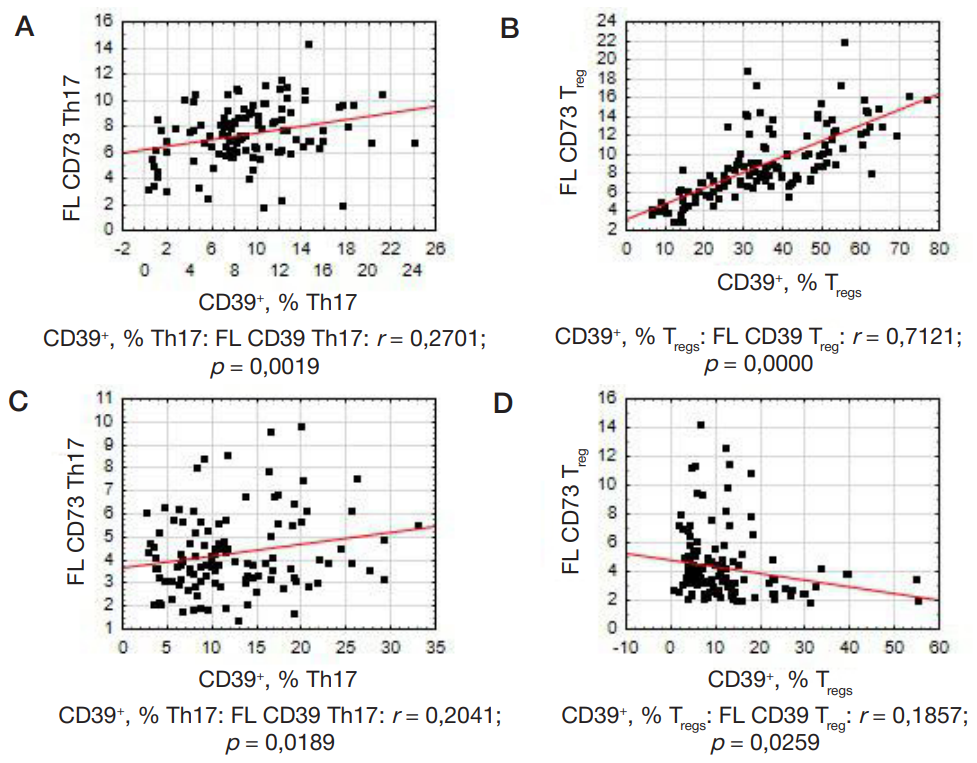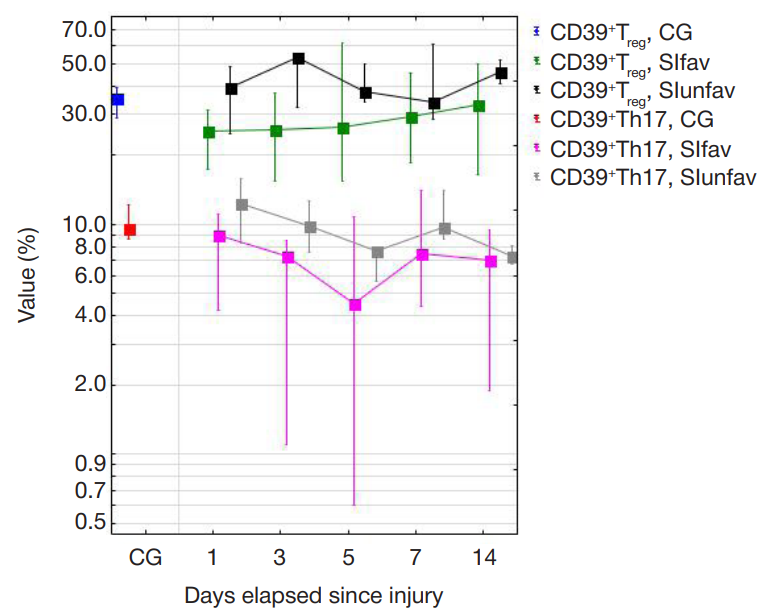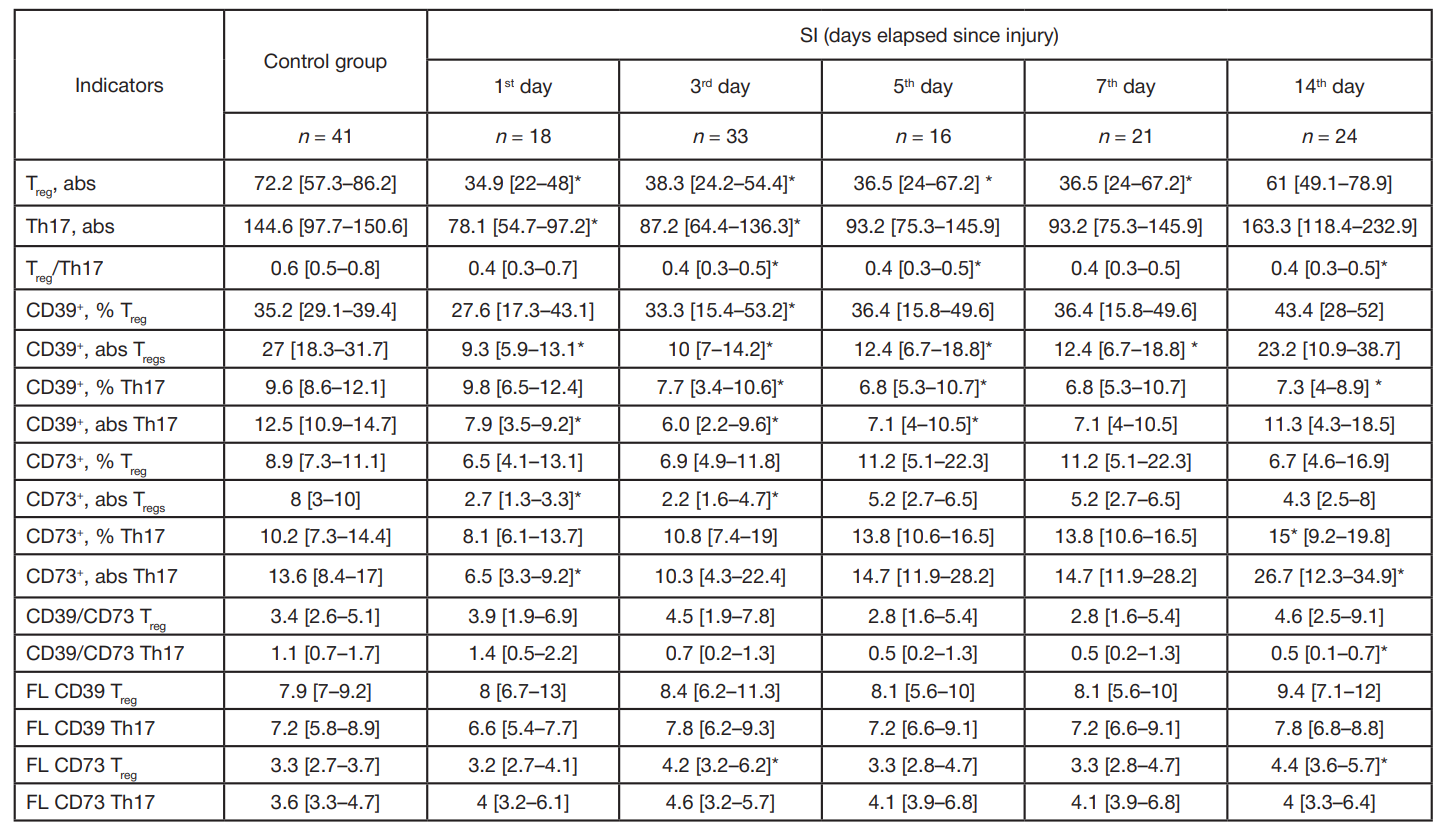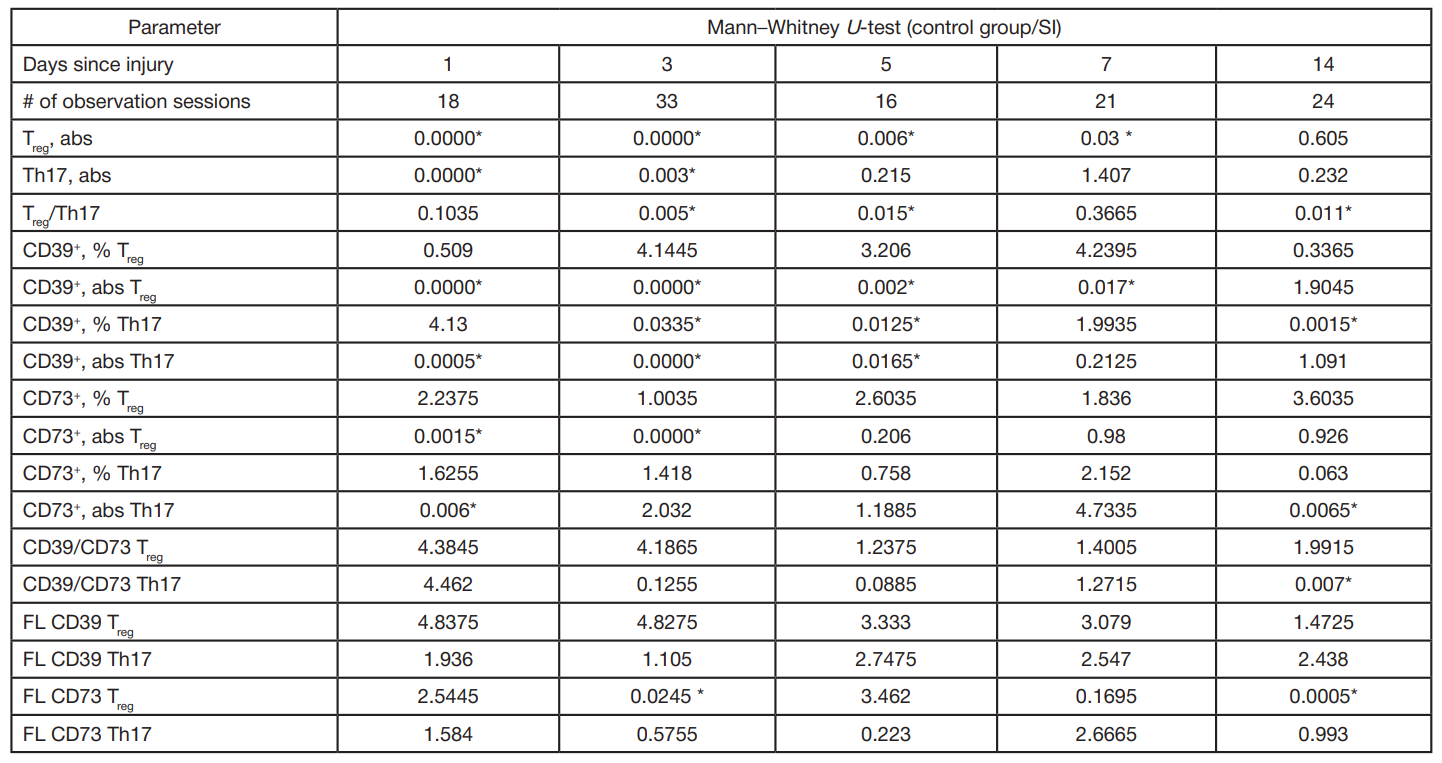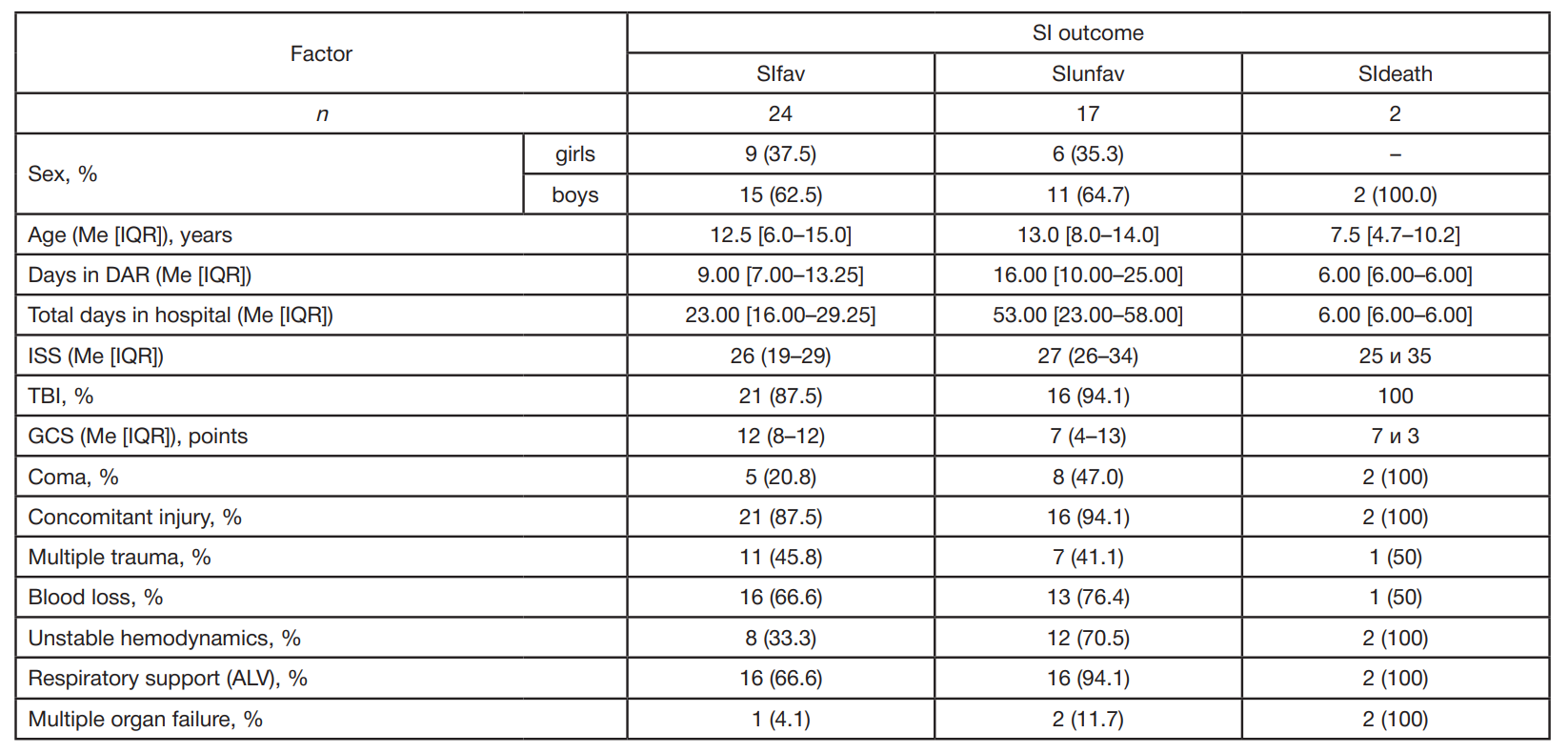
This article is an open access article distributed under the terms and conditions of the Creative Commons Attribution license (CC BY).
ORIGINAL RESEARCH
Regulatory T cells and T helper 17 cells expressing CD39 and CD73 ectonucleotidase in children with severe injury
1 National Medical Research Center for Children's Health, Moscow, Russia
2 Institute of Urgent Children Surgery and Traumatology, Moscow, Russia
Correspondence should be addressed: Rustam Shakirovich Zakirov
Lomonosovsky prospect, 2/1, Moscow, 119296, Russia; ur.dzcn@hsr.vorikaz
Funding: the study was supported under the State Assignment by the Ministry of Health of Russia, #AAAA–A19–119021190051–6, #122040800163–9
Acknowledgments: the authors express their gratitude to all patients who participated in the study, as well as to colleagues from the department of concomitant injury, anesthesiology and resuscitation of the Research Institute of Emergency Pediatric Surgery and Traumatology of the Moscow Department of Health for their cooperation.
Author contribution: Zakirov RSh, Karaseva OV, Petrichuk SV — study planning, analysis of literature, collection of experimental data, analysis and interpretation of the results, manuscript authoring and editing; Semikina EL — study planning; Kuptsova DG, Freidlin EV — collection of experimental data.
Compliance with the ethical standards: the study was approved by the Ethics Committee of the Institute of Urgent Children Surgery and Traumatology of the Department of Health of Moscow (Minutes #2 of May 26, 2020). Parents of all participants of the study have signed the informed consent form in accordance with the principles of the Declaration of Helsinki.
